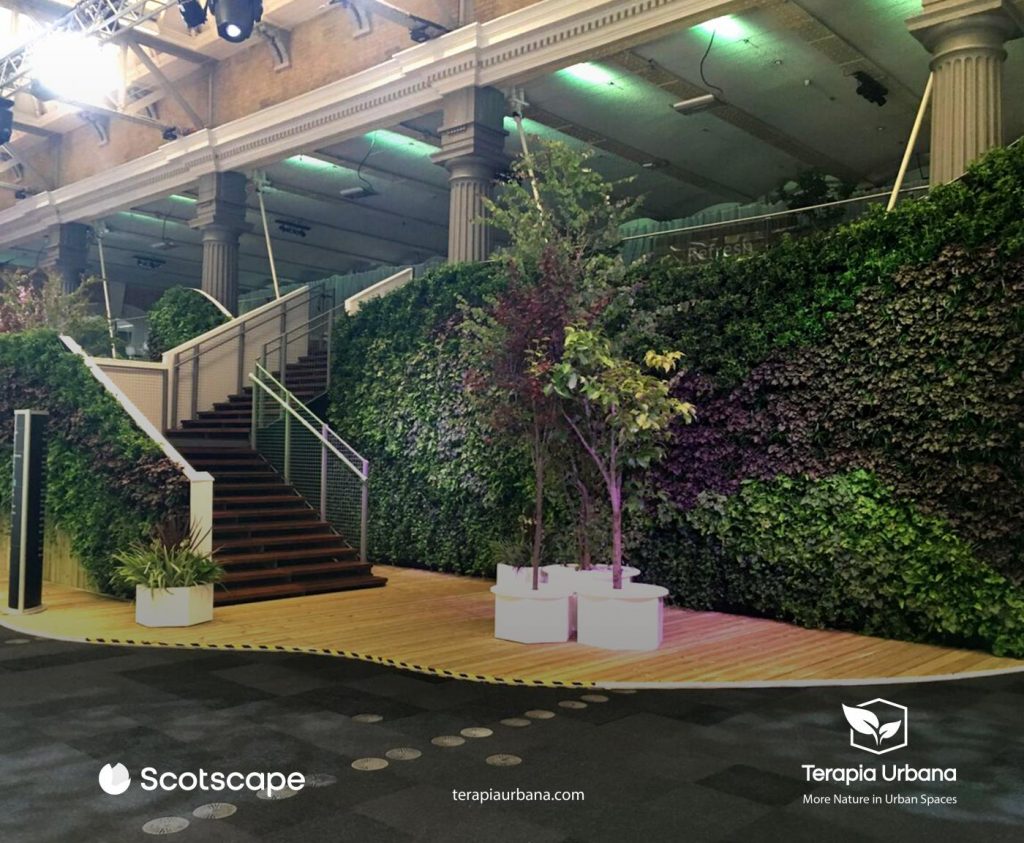Respect for the environment has become one of the core values around the world. Hence, the integration of nature in the current urban environment brings with it new challenges for architects and landscapers.
The development of sustainable buildings and homes (sustainable architecture) has gone in a very short time from being a luxury that is difficult to access to an essential requirement, both in the construction of new spaces and in their remodeling. We seek to create resilient cities to face climate change and combat the «sick building syndrome».
Living walls are becoming an important element of architecture of the present and the future. The pandemic has left its inhabitants wanting to get back in touch with nature, so that it is increasingly common to see buildings that incorporate elements of urban nature both outdoors and indoors.
Benefit of contact with nature – Skogluft method
According to a study by the World Health Organization (WHO), «Europeans spend 90% of the time, two thirds in our home and the rest in the workplace or public spaces«. However, we usually look for escapes to nature to surround ourselves with vegetation, disconnect and flood ourselves with the positive feelings that this “green” environment conveys to us, it is the need that we human beings have for biophilia.
In this thread we find the approach of the Skogluft method. A method designed by the Norwegian engineer Jorn Viumdal who proposes the integration of green walls at home (or, by extension, in buildings and in urban environments) to reduce stress levels, improve concentration and reduce discomfort.
According to the experience of this engineer, the installation of vertical gardens improves not only mood, but also health, since it allows cortisol levels to be reduced (the hormone that is secreted in response to stress) and the immune system is strengthened .
Taking into account the philosophy of this method, the more plants we have in the same space, the more benefits we will obtain: we will be happier and even more productive, when it comes to the workplace.
Integrating nature into a building entails advantages that in the future will be key to survival.
A rising trend
Vertical gardens have become, as we mentioned at the beginning of this post, one of the current sustainable trends, and we can find them more and more frequently in large cities around the world. We end this post by reviewing 3 in which we have participated and of which we are especially proud:

